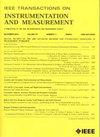A Remaining Useful Life Prediction Method for Rolling Bearing Based on TCN-Transformer
IF 5.6
2区 工程技术
Q1 ENGINEERING, ELECTRICAL & ELECTRONIC
IEEE Transactions on Instrumentation and Measurement
Pub Date : 2024-11-20
DOI:10.1109/TIM.2024.3502878
引用次数: 0
Abstract
Predicting the remaining useful life (RUL) of rolling bearings is crucial to ensure the stable operation of equipment. In recent years, predictive methodologies that leverage intelligent models have witnessed widespread development, significantly enhancing the precision of equipment prognostication. However, operating environments are inherently complex and can cause stochastic fluctuations in the characteristic indicators extracted during the rolling bearing degradation stage, leading to uncertainty in prediction outcomes. This study presents a TCN-transformer model and a two-stage degradation feature optimization methodology to address these challenges. The first stage uses Kalman filtering to suppress abnormal noise in the degradation index. In the second stage, a nonlinear smoothing algorithm based on degradation trends was constructed to improve the performance of degradation indicators. The proposed method constructs more stable and reliable degradation indicators. Additionally, to improve prediction accuracy, a TCN-transformer rolling bearing lifespan prediction model is proposed. Probability prediction and interval prediction are incorporated into rolling bearing RUL prediction to enhance the reliability of the model. Finally, the effectiveness of the proposed method is validated on the publicly available dataset XJTU-SY.基于tcn变压器的滚动轴承剩余使用寿命预测方法
预测滚动轴承的剩余使用寿命(RUL)对于保证设备的稳定运行至关重要。近年来,利用智能模型的预测方法得到了广泛的发展,大大提高了设备预测的精度。然而,运行环境本身是复杂的,在滚动轴承退化阶段提取的特征指标可能会产生随机波动,导致预测结果的不确定性。本研究提出了一种tcn变压器模型和一种两阶段退化特征优化方法来解决这些挑战。第一阶段采用卡尔曼滤波抑制退化指标中的异常噪声。第二阶段,构建基于退化趋势的非线性平滑算法,提高退化指标的性能。该方法构建了更加稳定可靠的降解指标。此外,为了提高预测精度,提出了tcn -变压器滚动轴承寿命预测模型。将概率预测和区间预测结合到滚动轴承RUL预测中,提高了模型的可靠性。最后,在公开数据集XJTU-SY上验证了该方法的有效性。
本文章由计算机程序翻译,如有差异,请以英文原文为准。
求助全文
约1分钟内获得全文
求助全文
来源期刊

IEEE Transactions on Instrumentation and Measurement
工程技术-工程:电子与电气
CiteScore
9.00
自引率
23.20%
发文量
1294
审稿时长
3.9 months
期刊介绍:
Papers are sought that address innovative solutions to the development and use of electrical and electronic instruments and equipment to measure, monitor and/or record physical phenomena for the purpose of advancing measurement science, methods, functionality and applications. The scope of these papers may encompass: (1) theory, methodology, and practice of measurement; (2) design, development and evaluation of instrumentation and measurement systems and components used in generating, acquiring, conditioning and processing signals; (3) analysis, representation, display, and preservation of the information obtained from a set of measurements; and (4) scientific and technical support to establishment and maintenance of technical standards in the field of Instrumentation and Measurement.
 求助内容:
求助内容: 应助结果提醒方式:
应助结果提醒方式:


